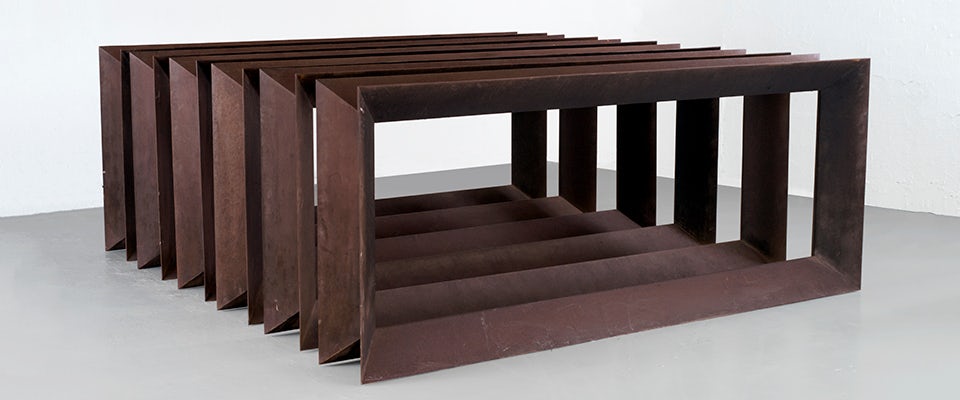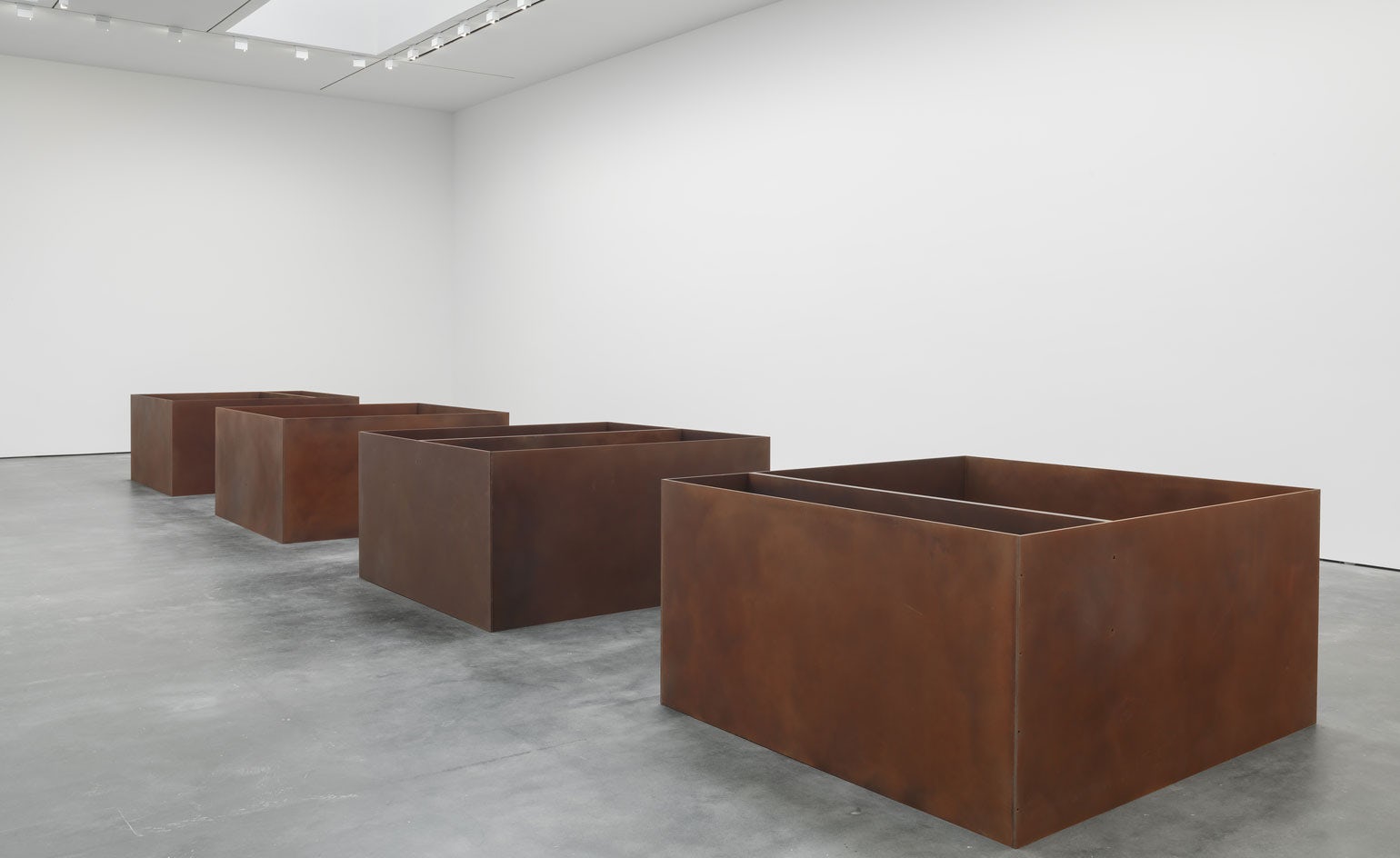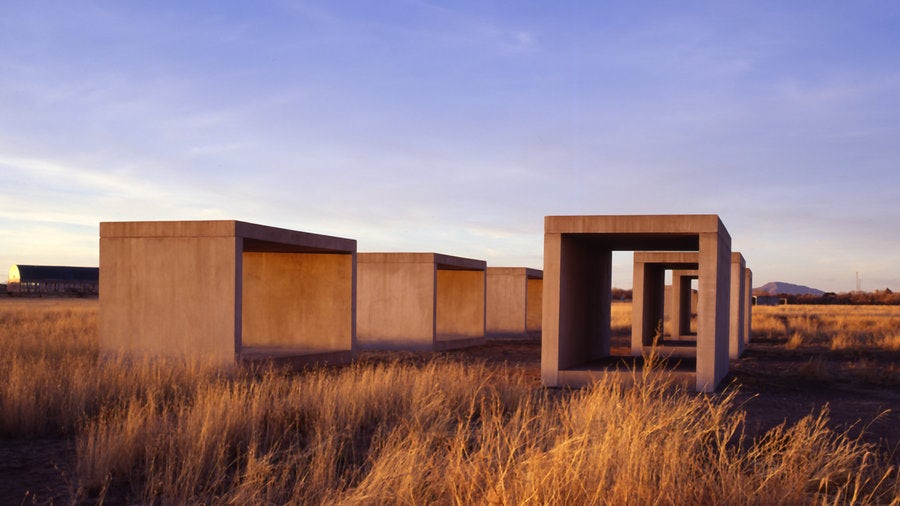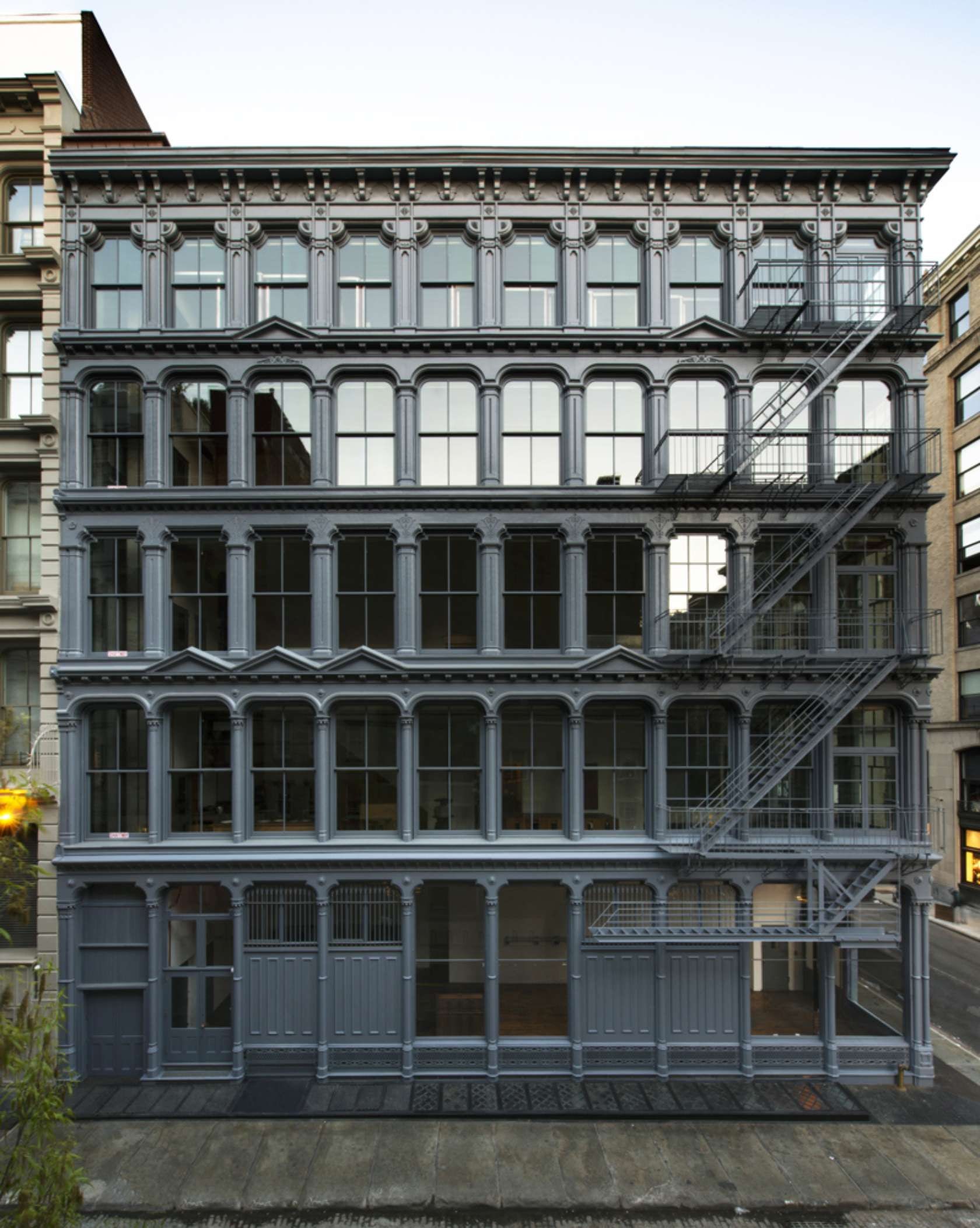A pioneer of the New York art scene of the 1960s, Donald Judd is not commonly associated with his works in COR-TEN steel. These particular pieces are rare, and currently the subject of a show curated by Judd’s own son at David Zwirner Gallery, on view through December 19th.
Flavin Judd is no stranger to curating his father’s work — having first done so for Christie’s in 2006. He felt the time was right to resurface a group that hadn’t been exhibited since 1987, executed in a material later used on mammoth scales by artist Richard Serra. The exhibition opens with a series of six evenly spaced, beautifully patinated rectangles and presents various floor and wall installations in the artist’s signature style.
We sat down with Flavin, who typically refers to his dad as “Don,” to discuss his ingenuity as both artist and architect and what it was like to grow up in Judd-designed spaces in New York and Marfa, Texas.

Judd’s exhibition, David Zwirner Gallery, Manhattan, New York
Architizer: What made you select these works, and how did you engineer the space?
Flavin Judd: They hadn’t been seen in a long time and were mostly in storage in Marfa. I had the gallery widen the first entryway and match it with the other doors. So I started with the building of the actual building and, then, figured out where to place each piece.

© Peter Harholdt
Judd’s exhibition, David Zwirner Gallery, Manhattan, New York
Architizer: What drew your father to COR-TEN steel?
Flavin Judd: For him, it was yet another material to play with. He liked it for its quality. We have an early piece from the ’70s, and then the rest are from when he began making them in Marfa in a studio.
Architizer: They have a lovely coloration and patina. How have they aged over time?
Flavin Judd: They haven’t. That’s basically how the material comes out of the factory. But it’s a very delicate surface and it has to be fixed up, constantly. Despite its heft and reputation, COR-TEN is very delicate. The surface is like a watercolor.

Judd’s exhibition, David Zwirner Gallery, Manhattan, New York
Architizer: Thinking about Judd’s spaces, 101 Spring Street and Marfa, did your father consider himself an architect as well as an artist?
Flavin Judd: Yeah, he didn’t accept the “academitization” or professionalization of things because, for him, there were a lot of supposed architects who had no clue whatsoever about space. Therefore, that meant the reverse could be true, that people who did know about space could be architects.
Architizer: What were your earliest memories of traveling to Marfa?
Flavin Judd: We started going there in ’71 to escape from New York for months at a time. We had been driving the Land Rover from New York to Baja California, Mexico, at first. It would take two weeks to get there … if it didn’t break down.
Architizer: Fun family road trip!
Flavin Judd: Max speed of 55 miles per hour! And after spending a couple summers in the sun, you realize that shelter is a really, really good thing. But we had to find something on this side of the border — Americans couldn’t buy land in Mexico at the time — and Marfa had a good set of qualities: it was the right kind of landscape, set in the mountains, and it was very isolated, which was essential. I was about four when Don pinpointed Marfa.

Donald Judd’s work in Marfa, Texas; via NPR
Architizer: So it was very much part of your childhood.
Flavin Judd: Yeah, we would go there for family vacations in the summers, and, then, when I was eight, we began living there for school.

101 Spring Street – Donald Judd Home + Studio, Manhattan, New York
Architizer: And the New York end of your childhood, do you have favorite memories from the five-floor apartment at Spring Street?
Flavin Judd: It was great! To me, it was completely normal … and only kind of later do you realize how different it was. It was more than different, it was like living in the Renaissance. That doesn’t exist anymore. I was very privileged to grow up in New York in that space and at that time.

Judd’s exhibition, David Zwirner Gallery, Manhattan, New York
Architizer: Do you think architects and interior designers are thinking more and more along the lines of curating space?
Flavin Judd: It’s all the same thing, we just put labels on it to professionalize it all. That’s the worst thing you can do. This gallery space could be someone’s living room.


